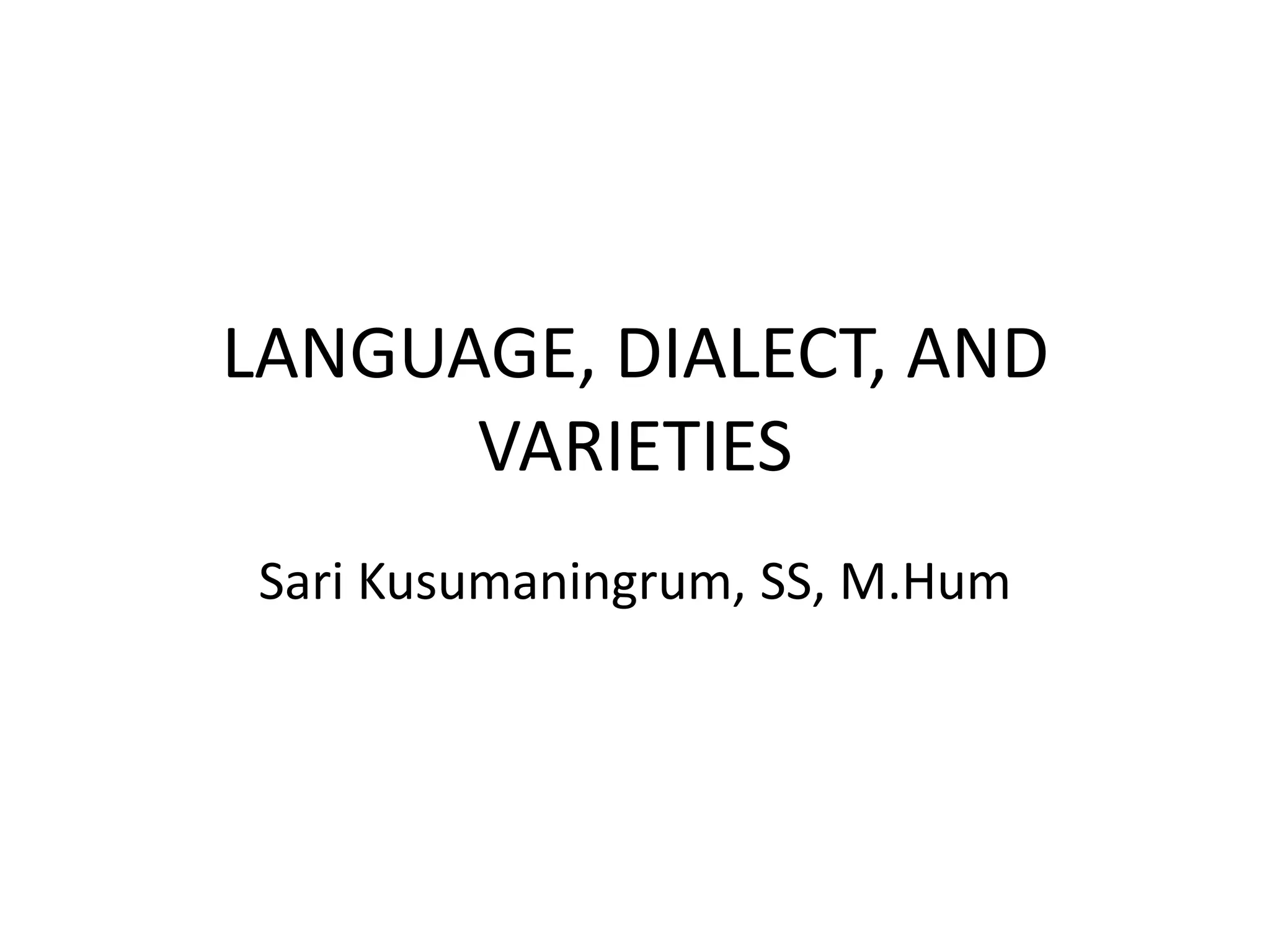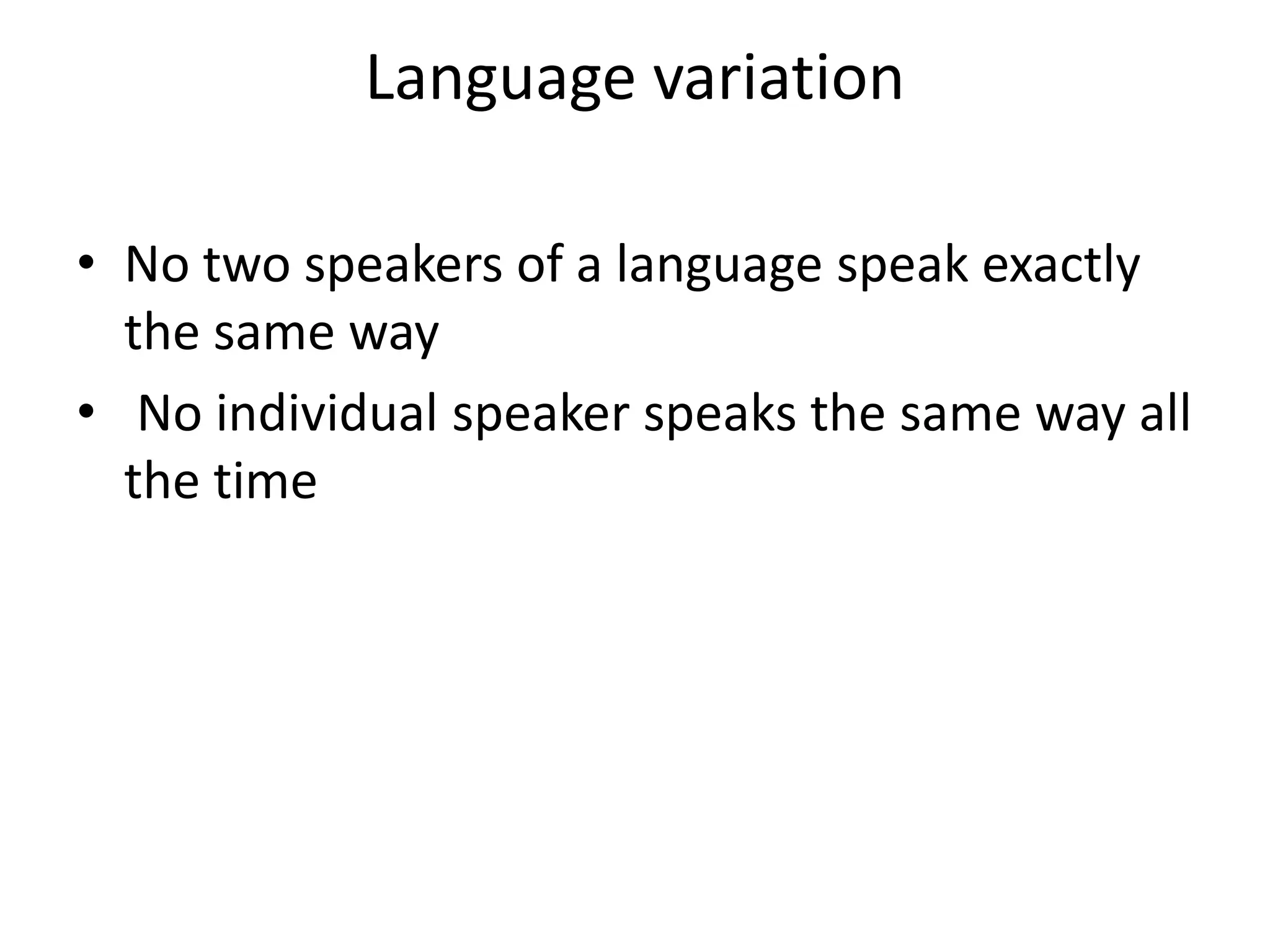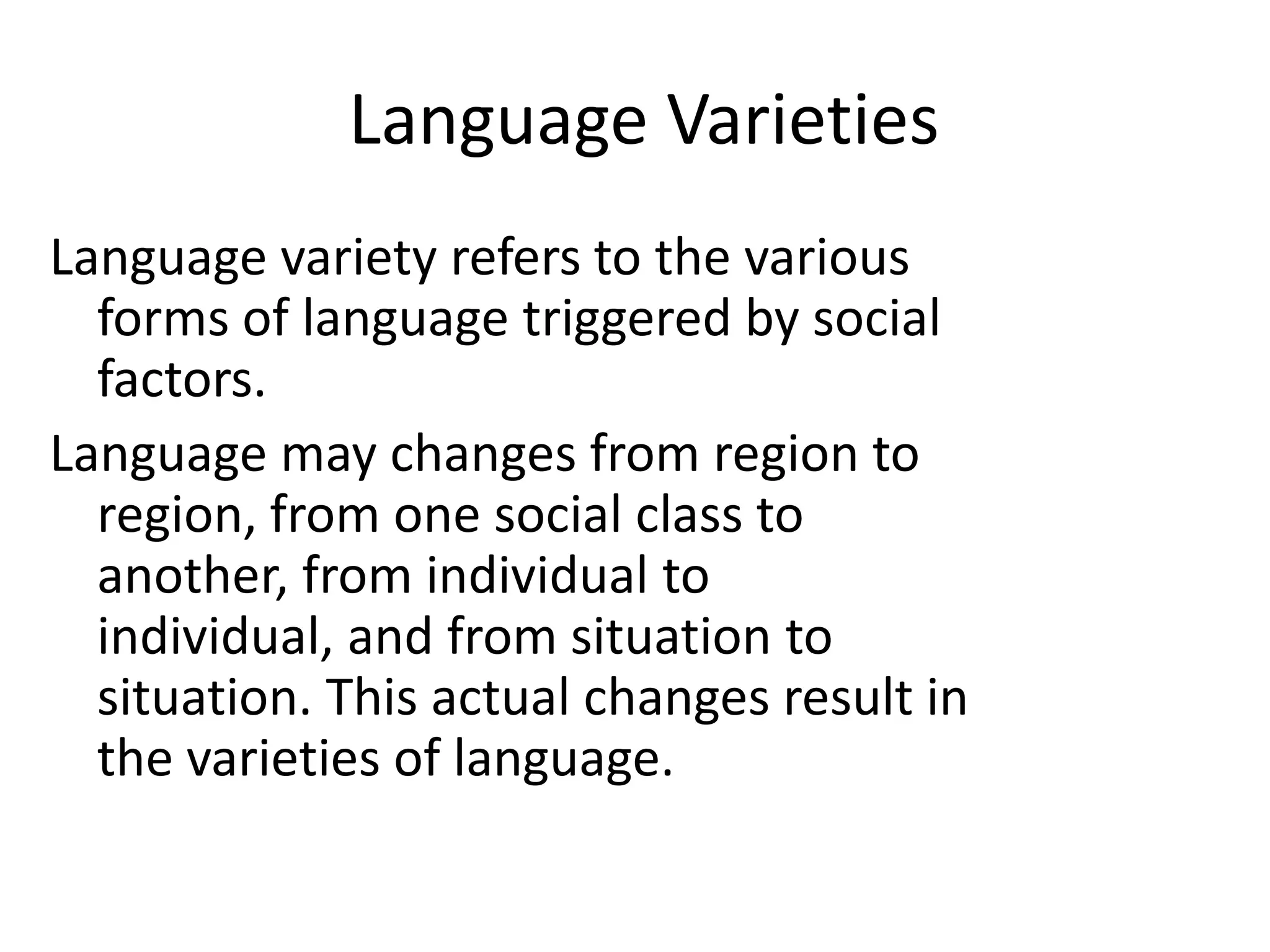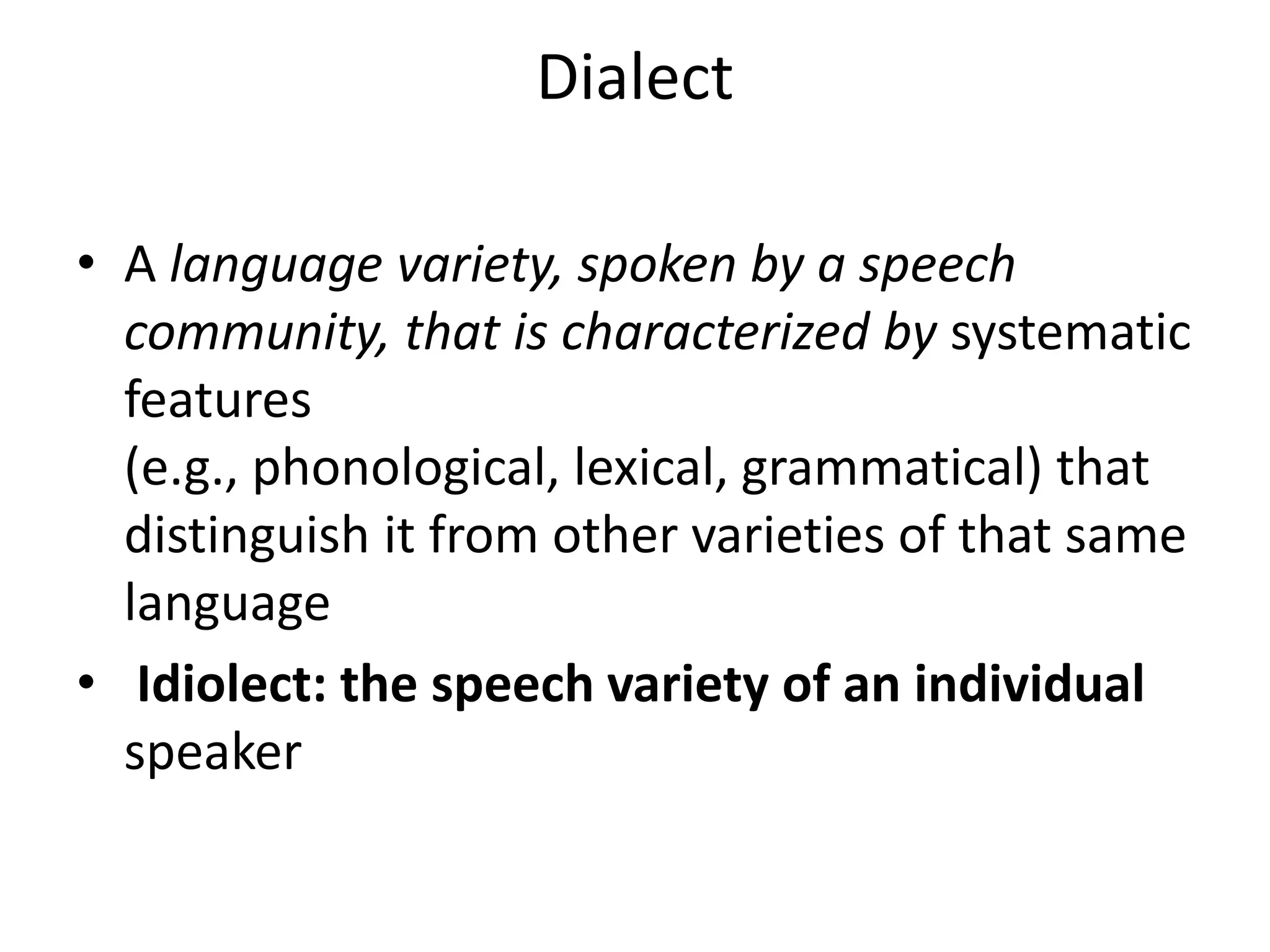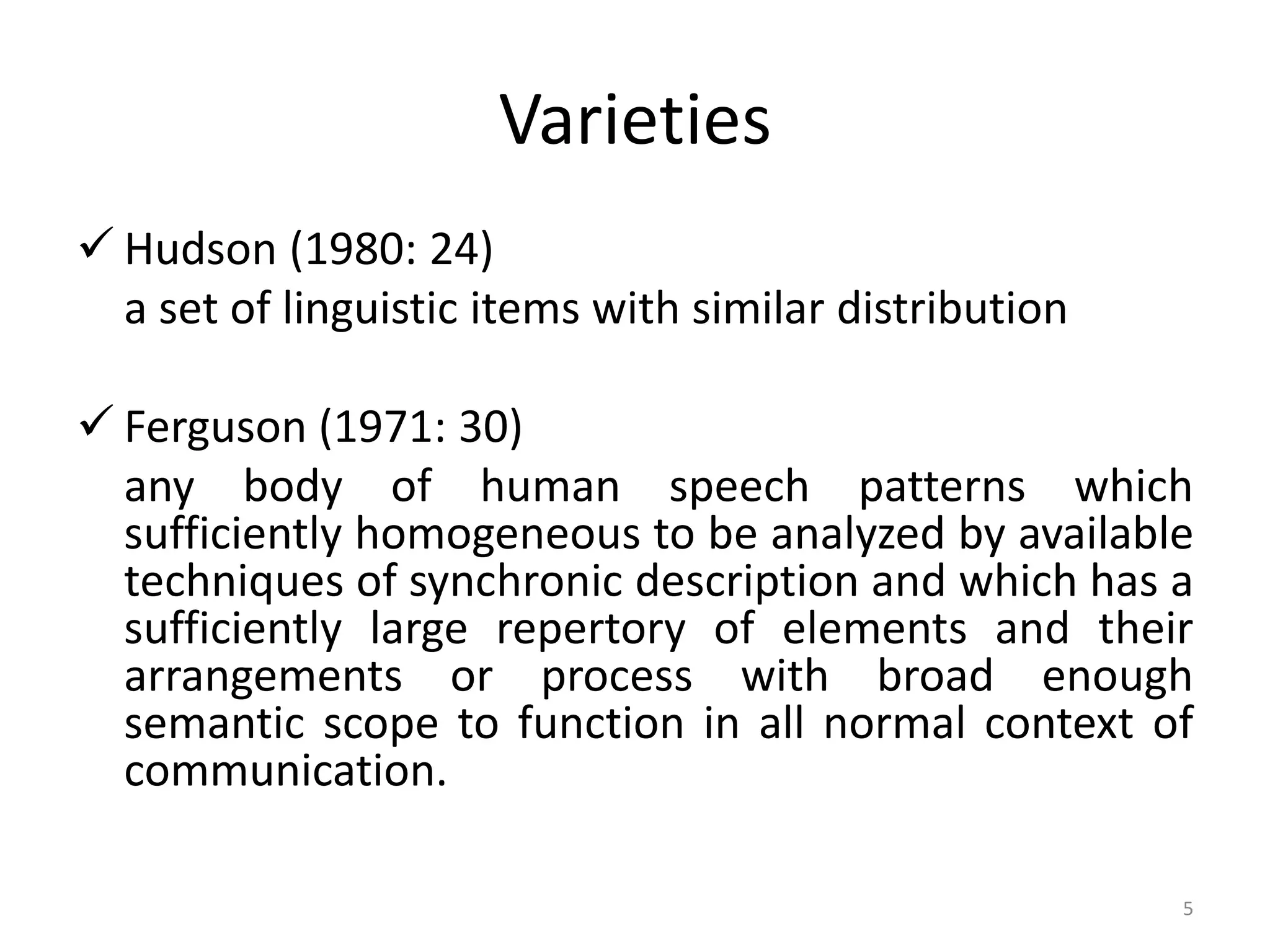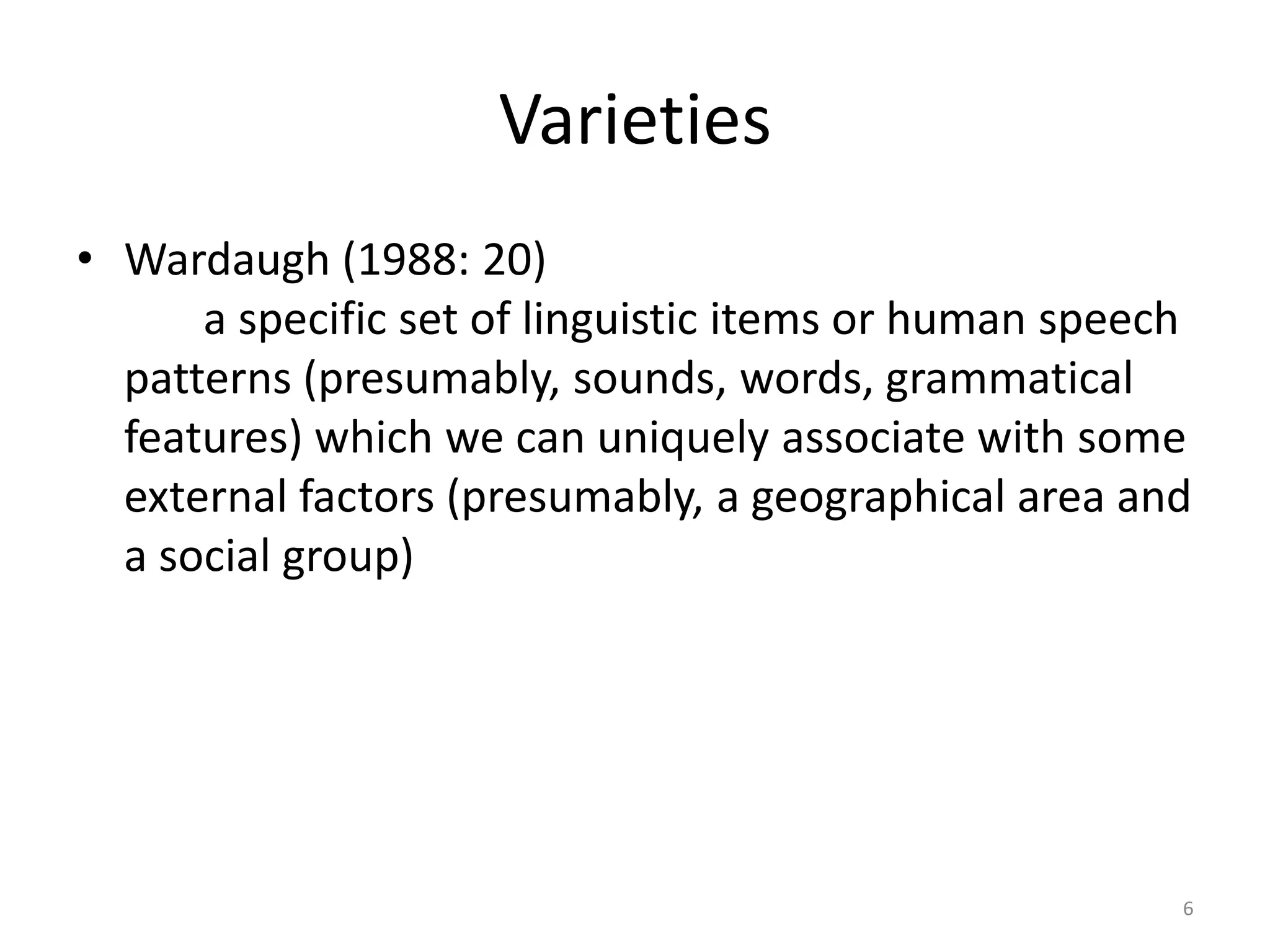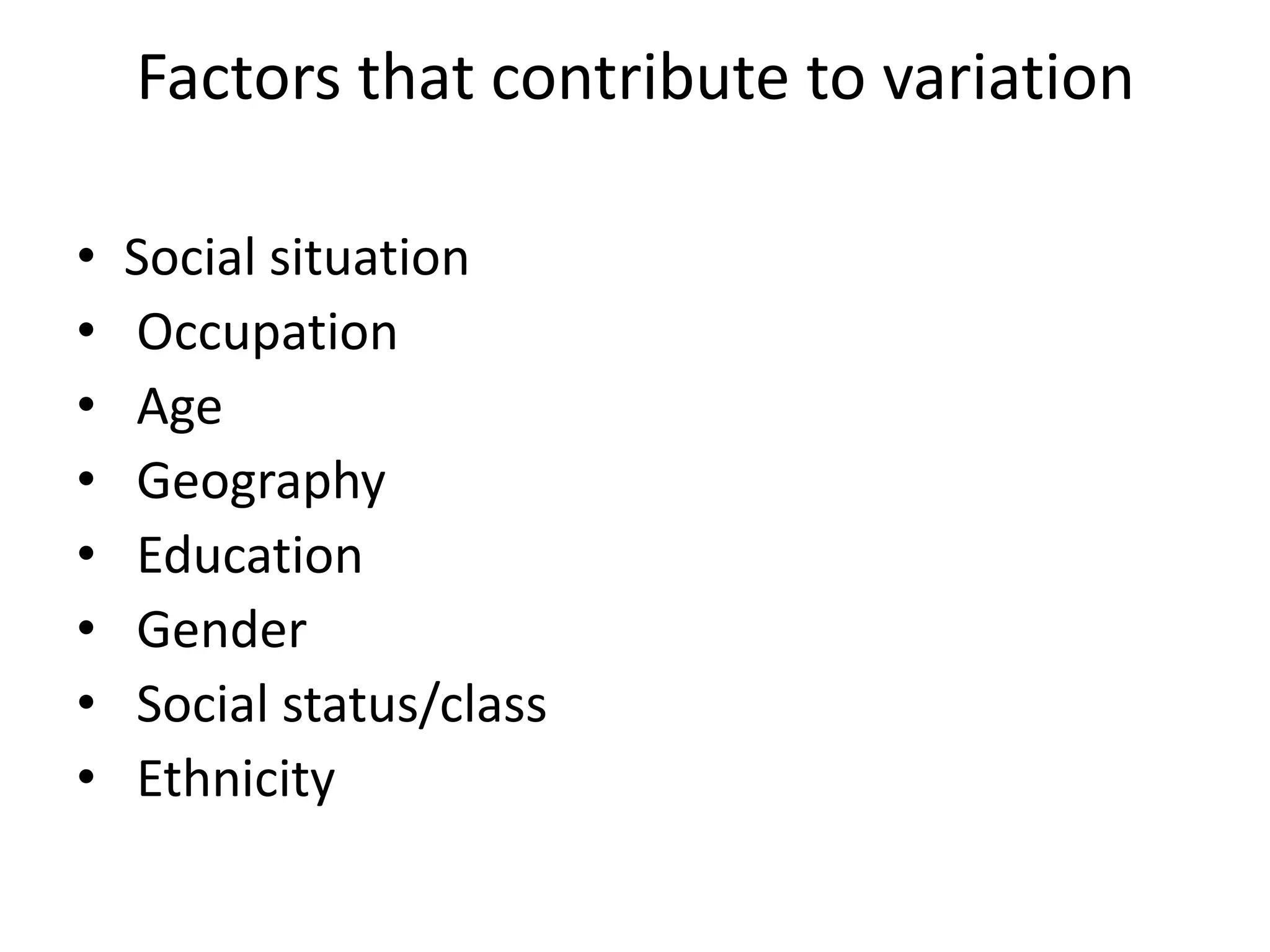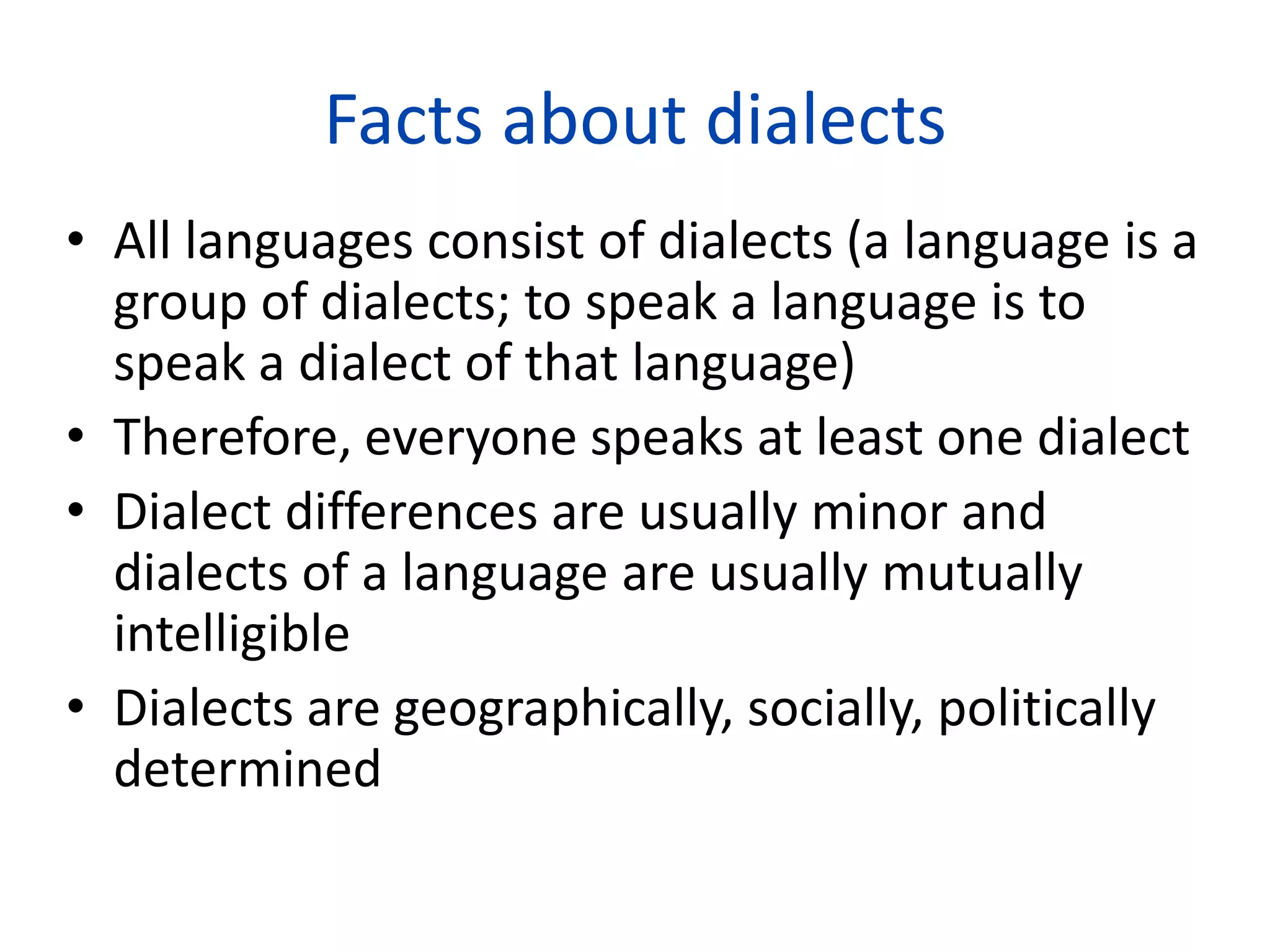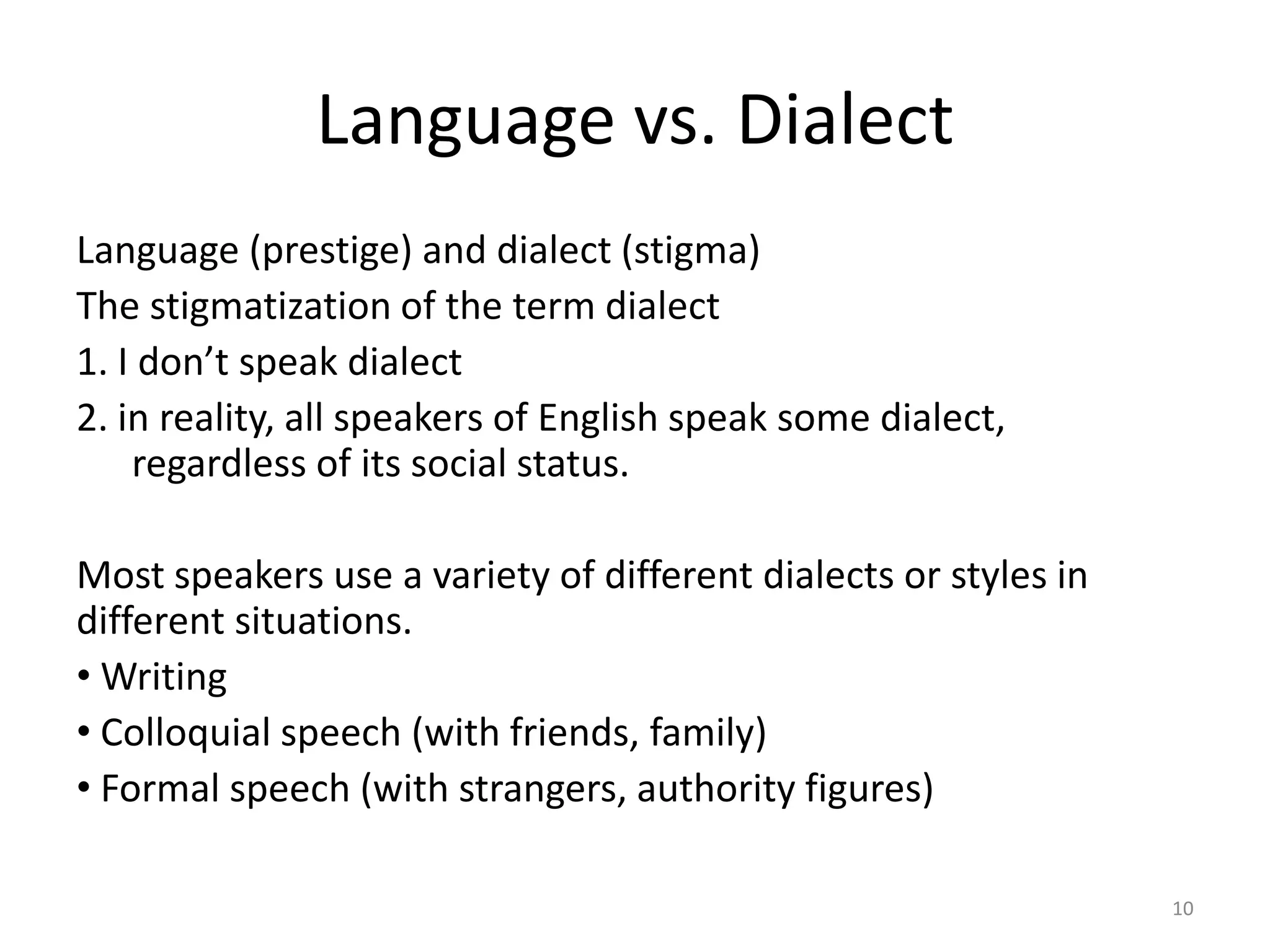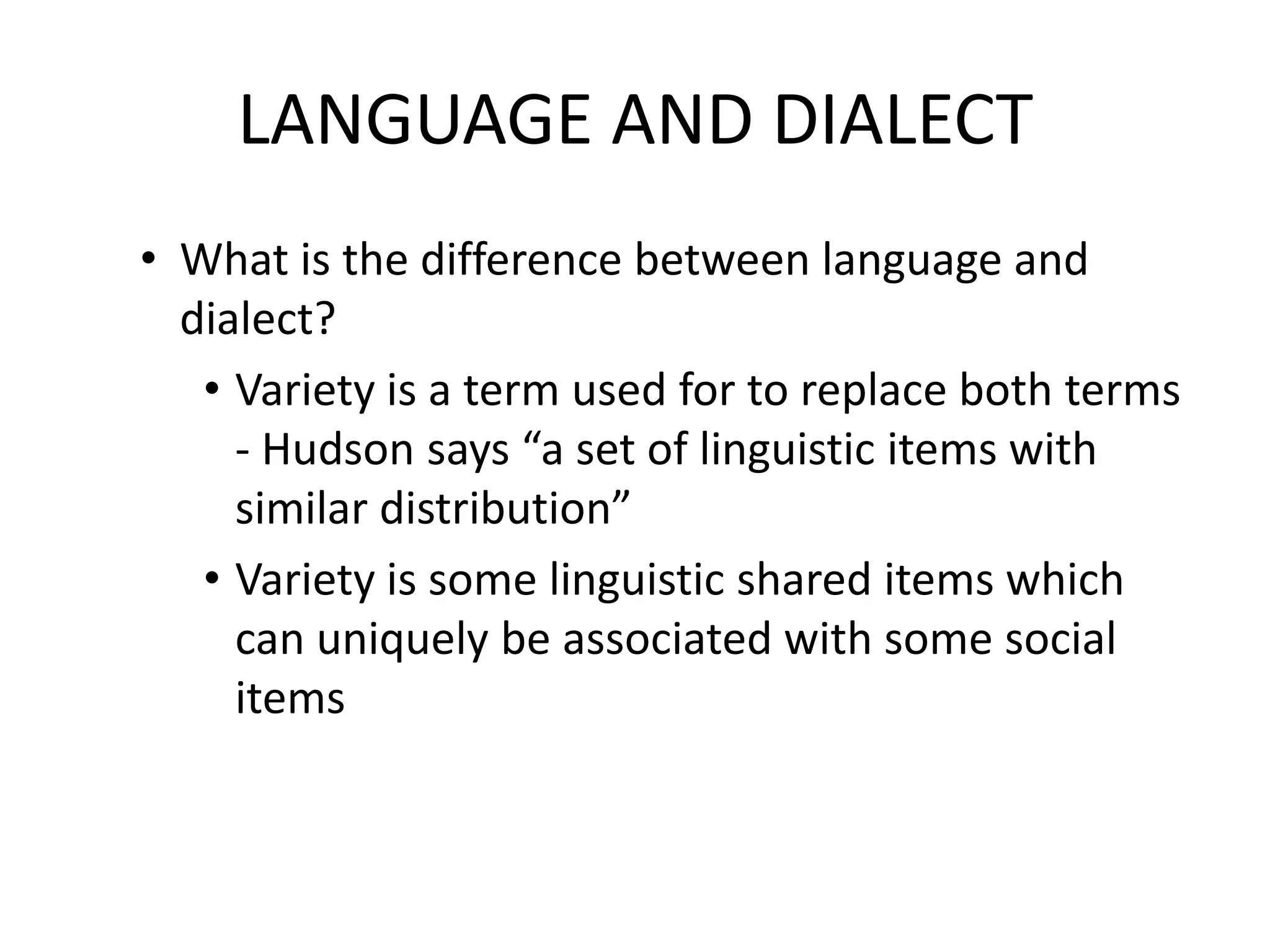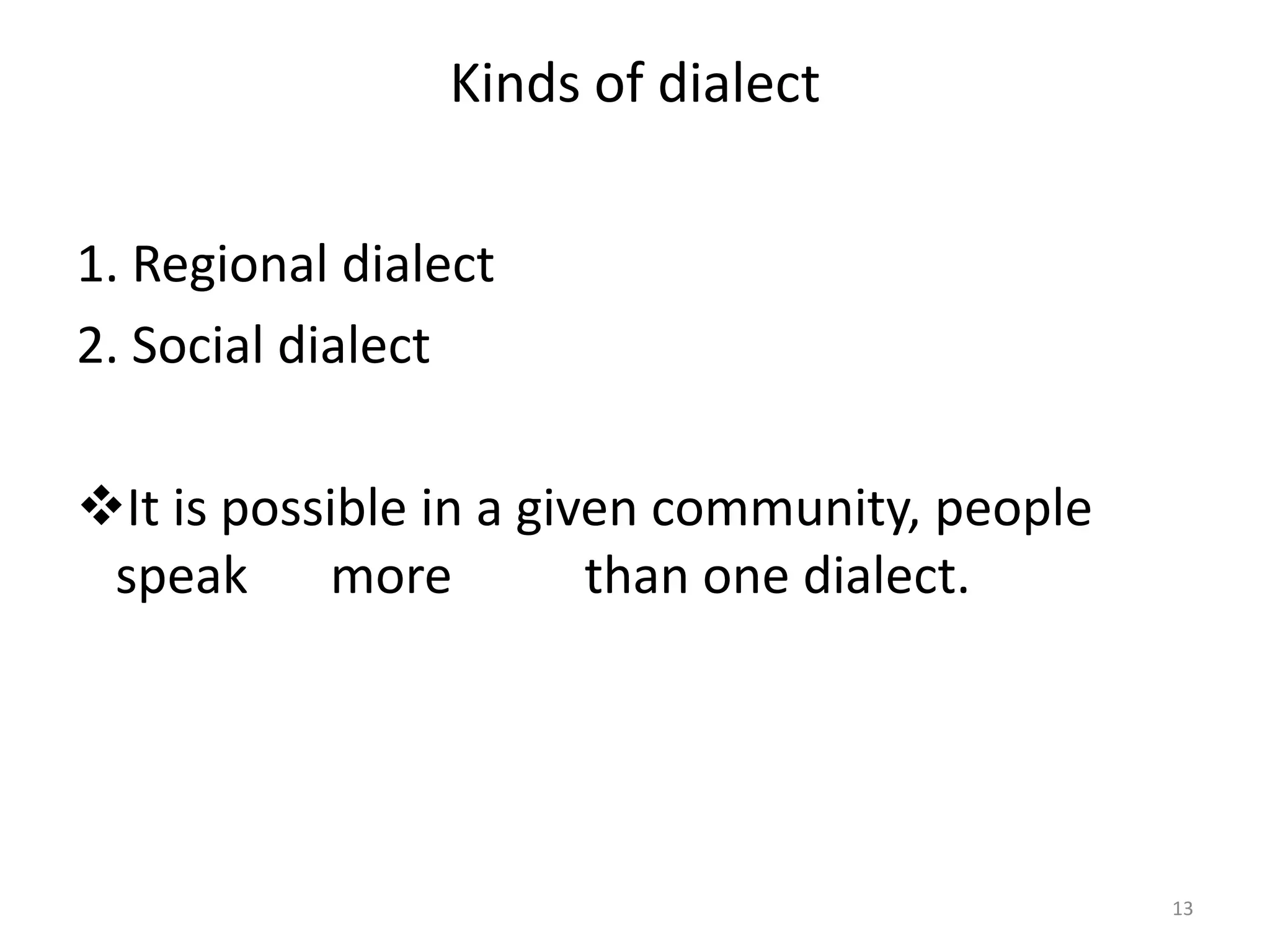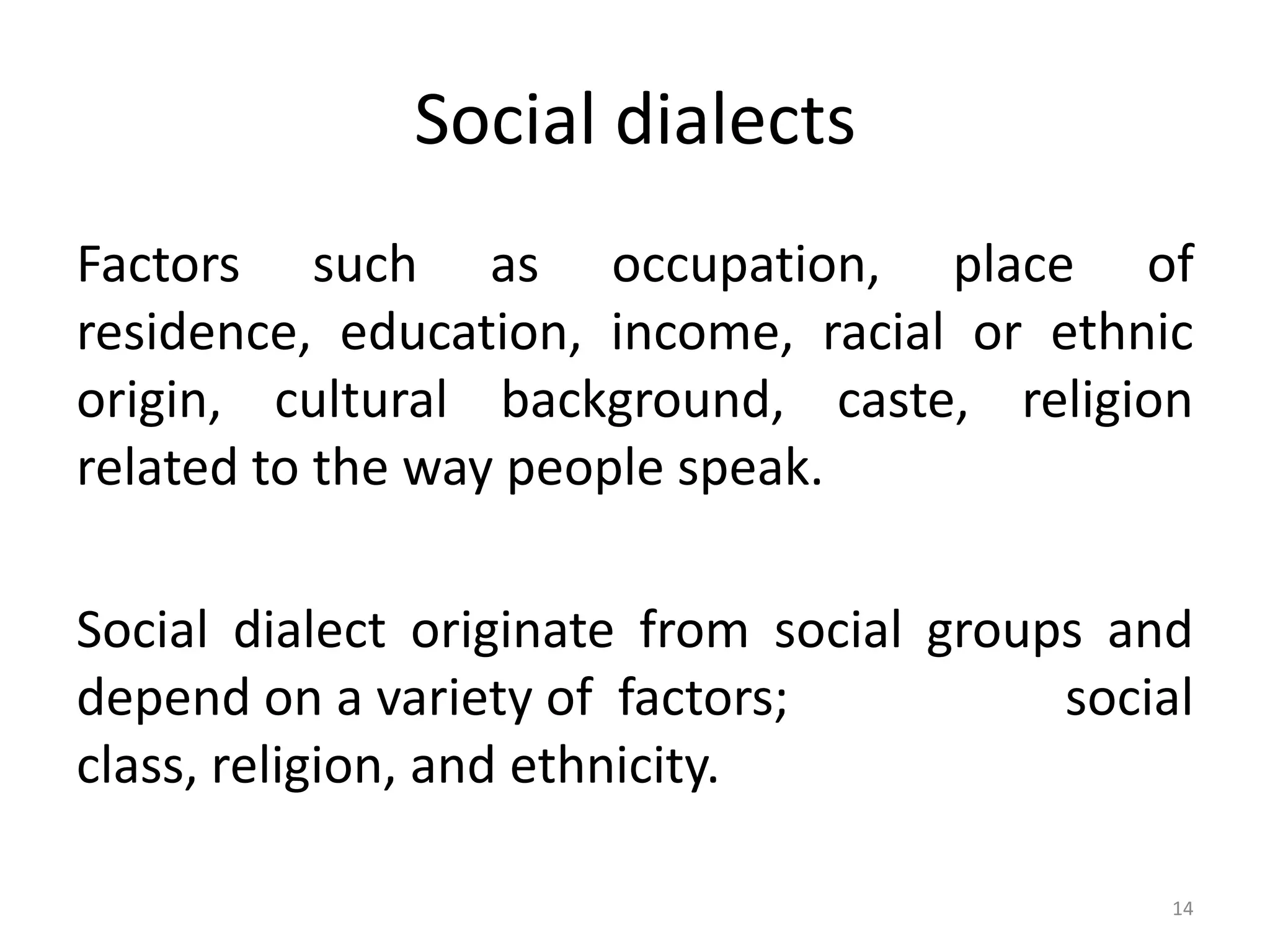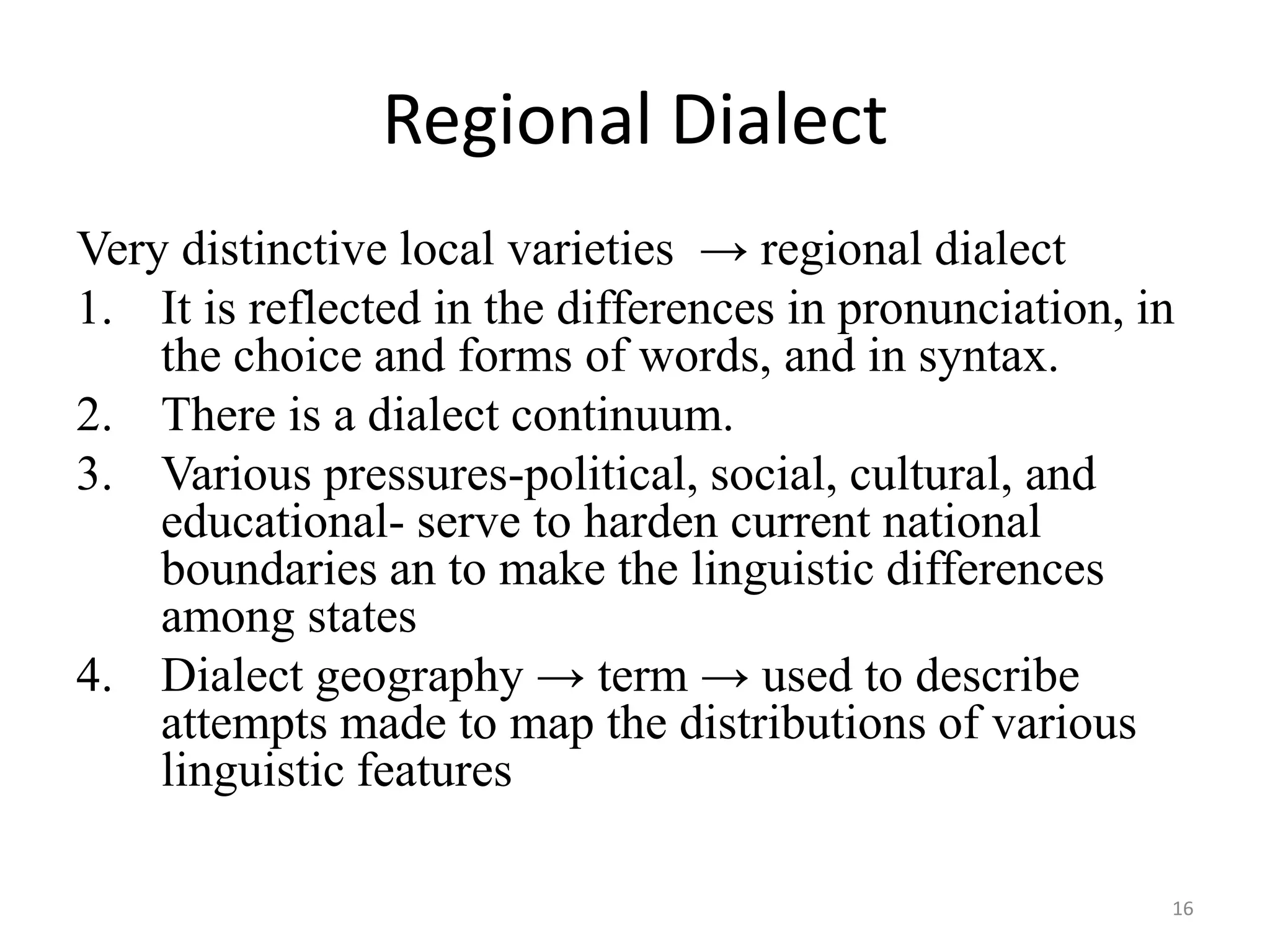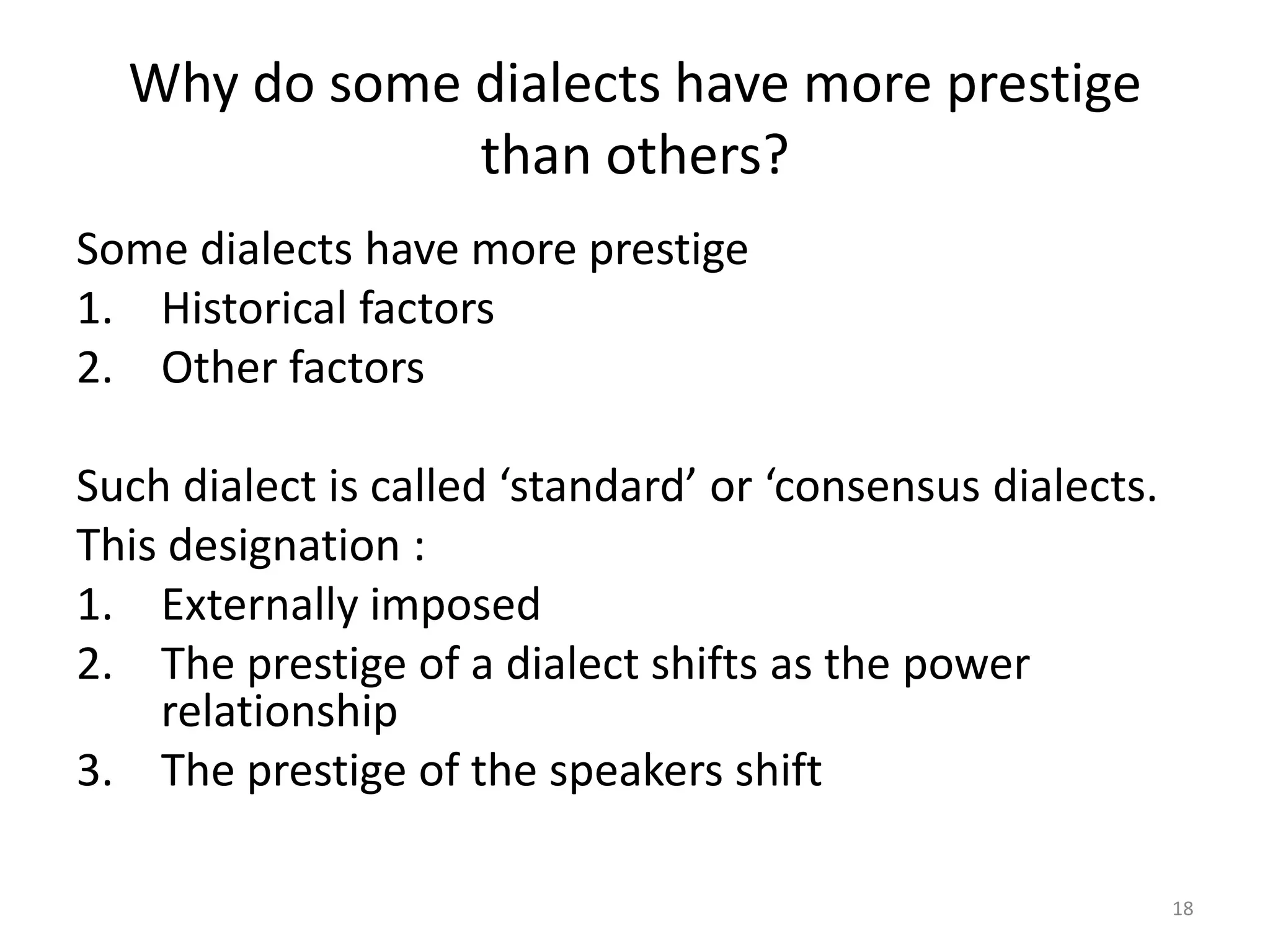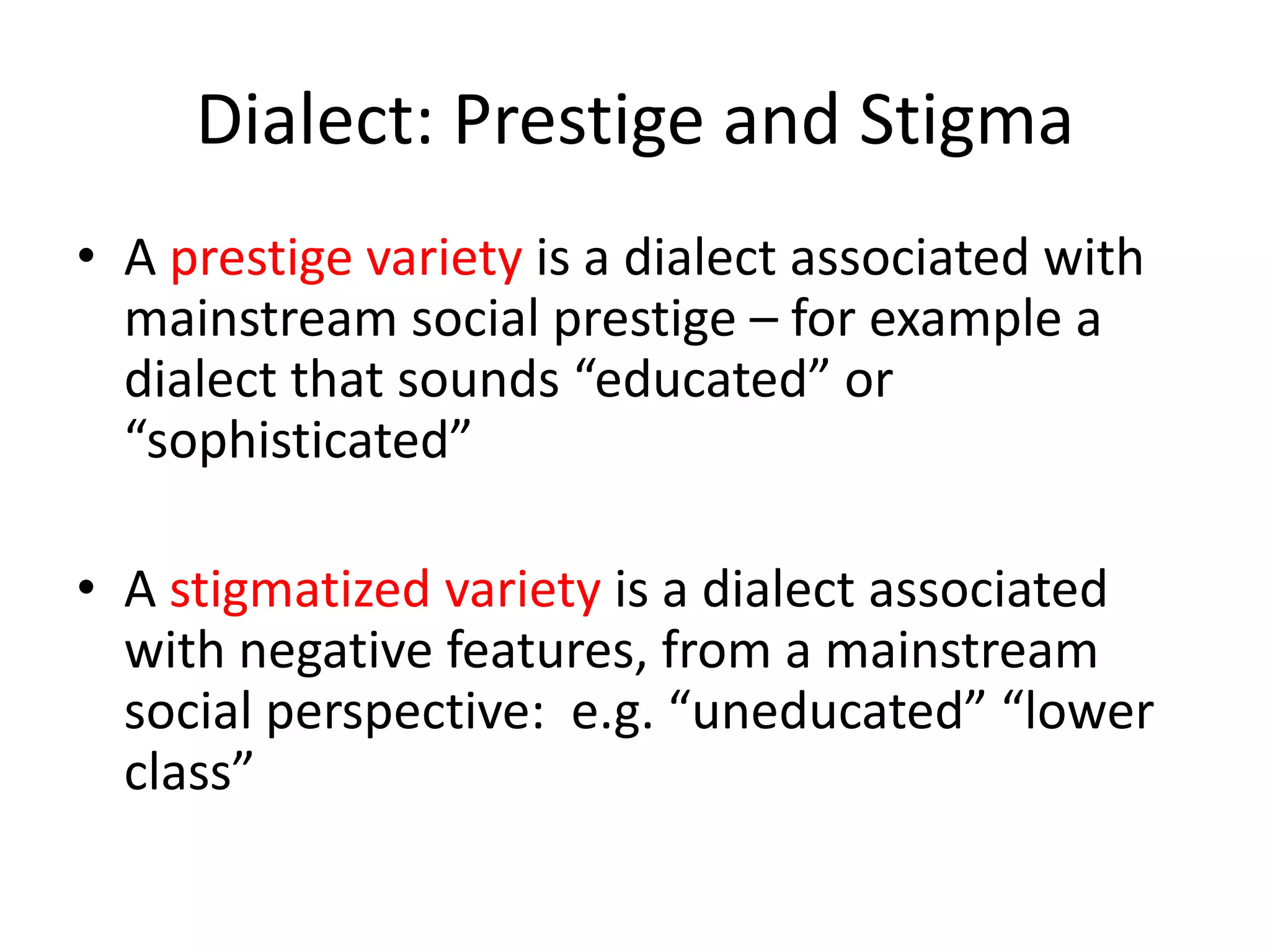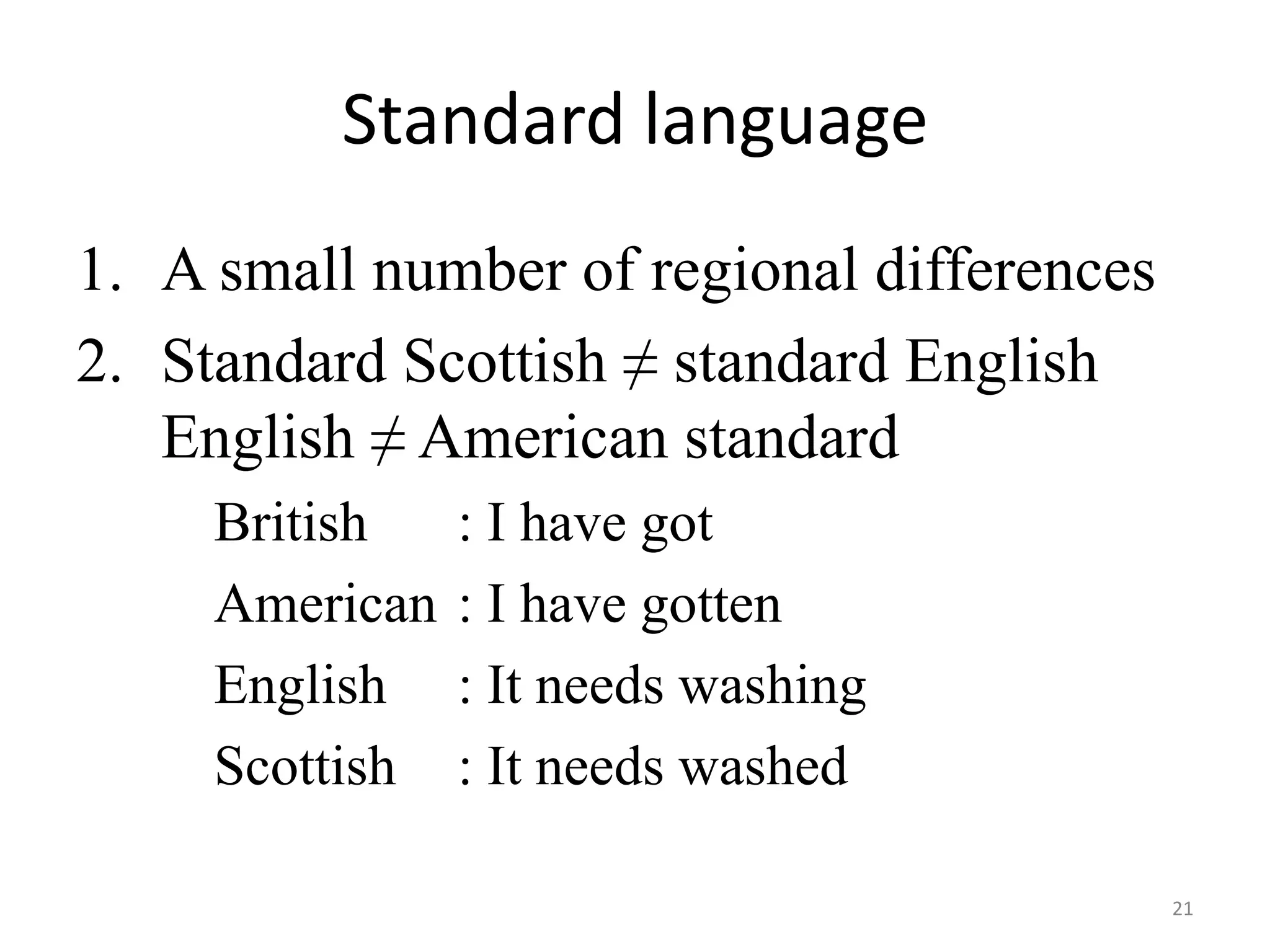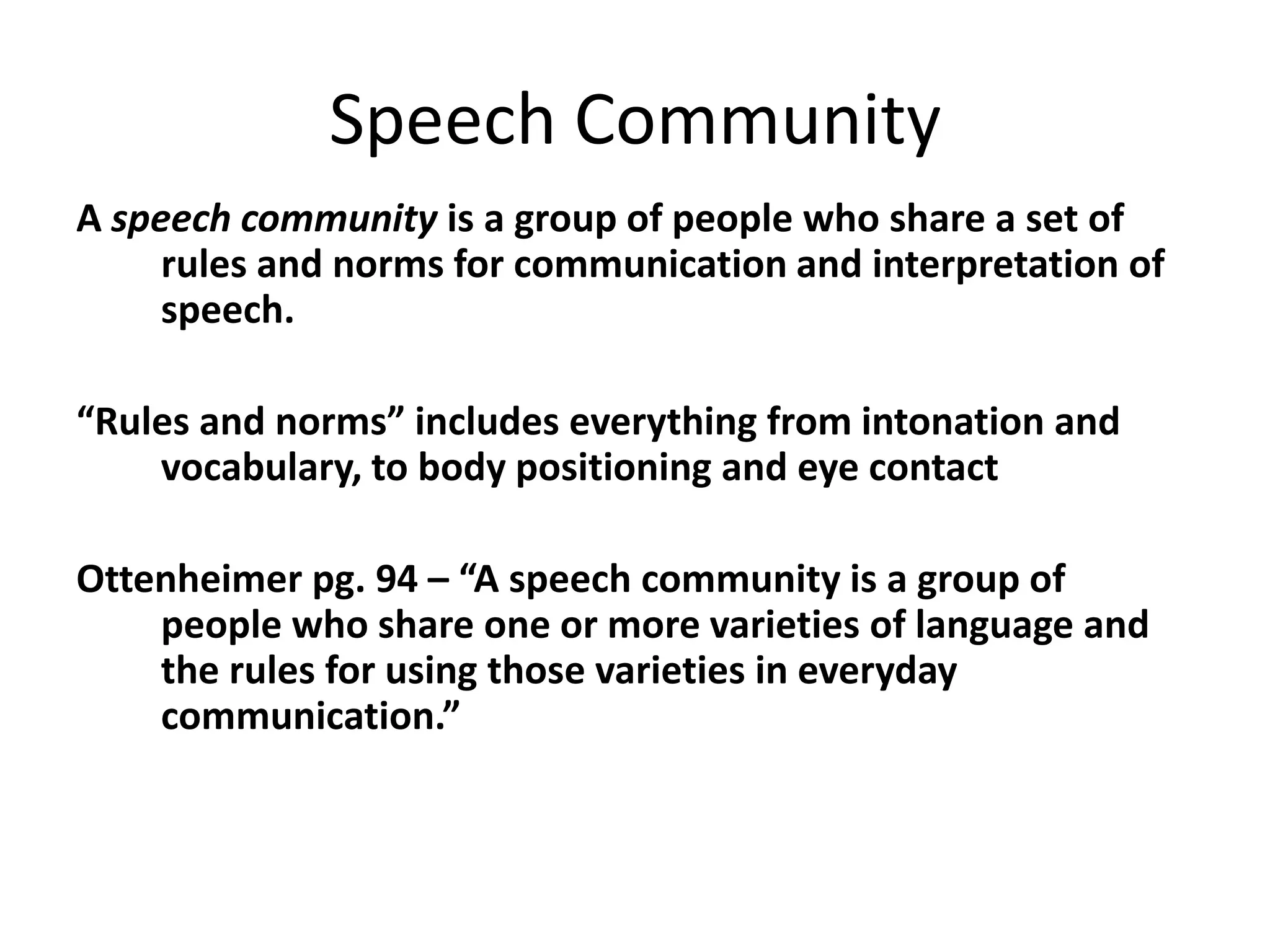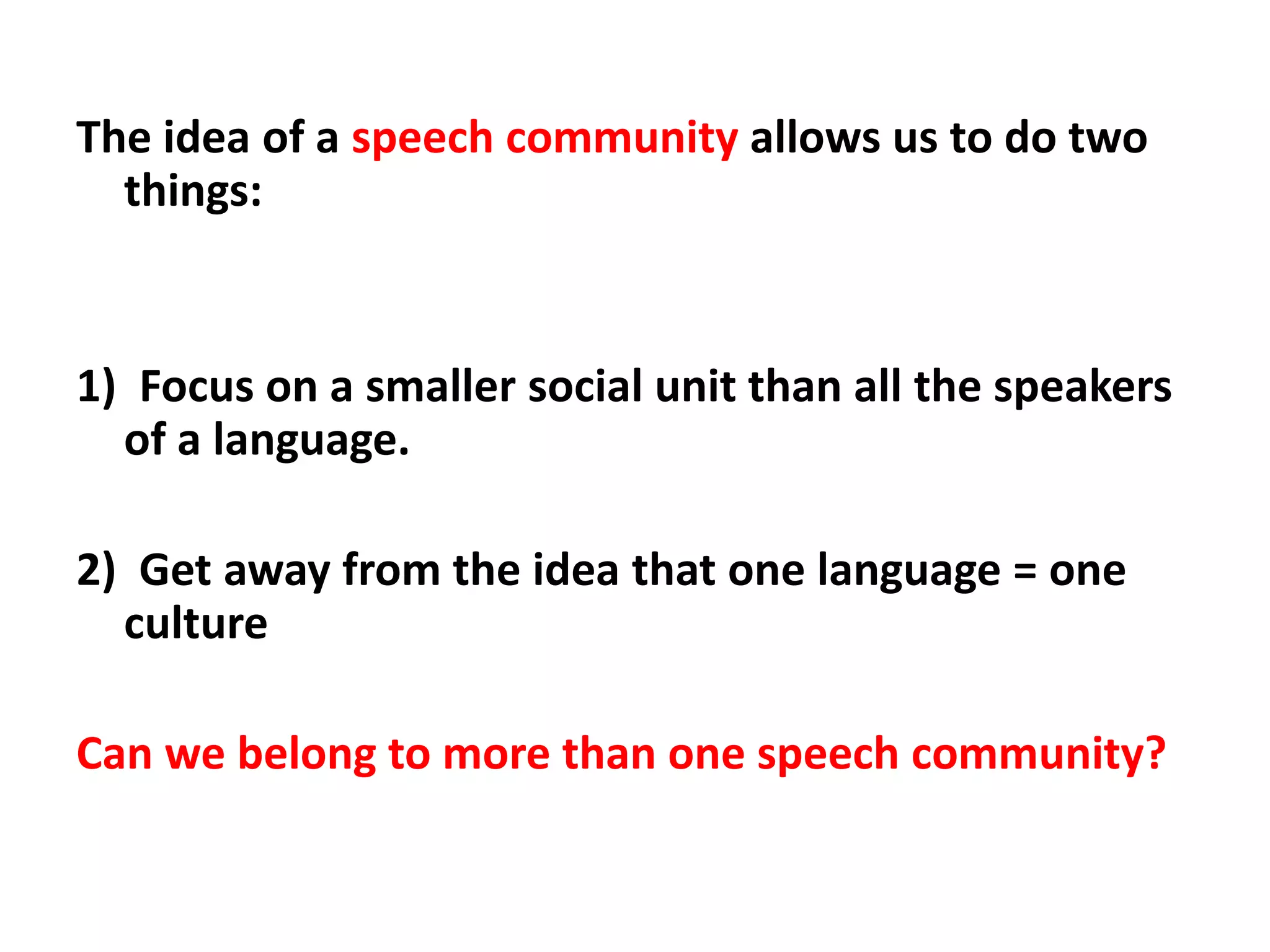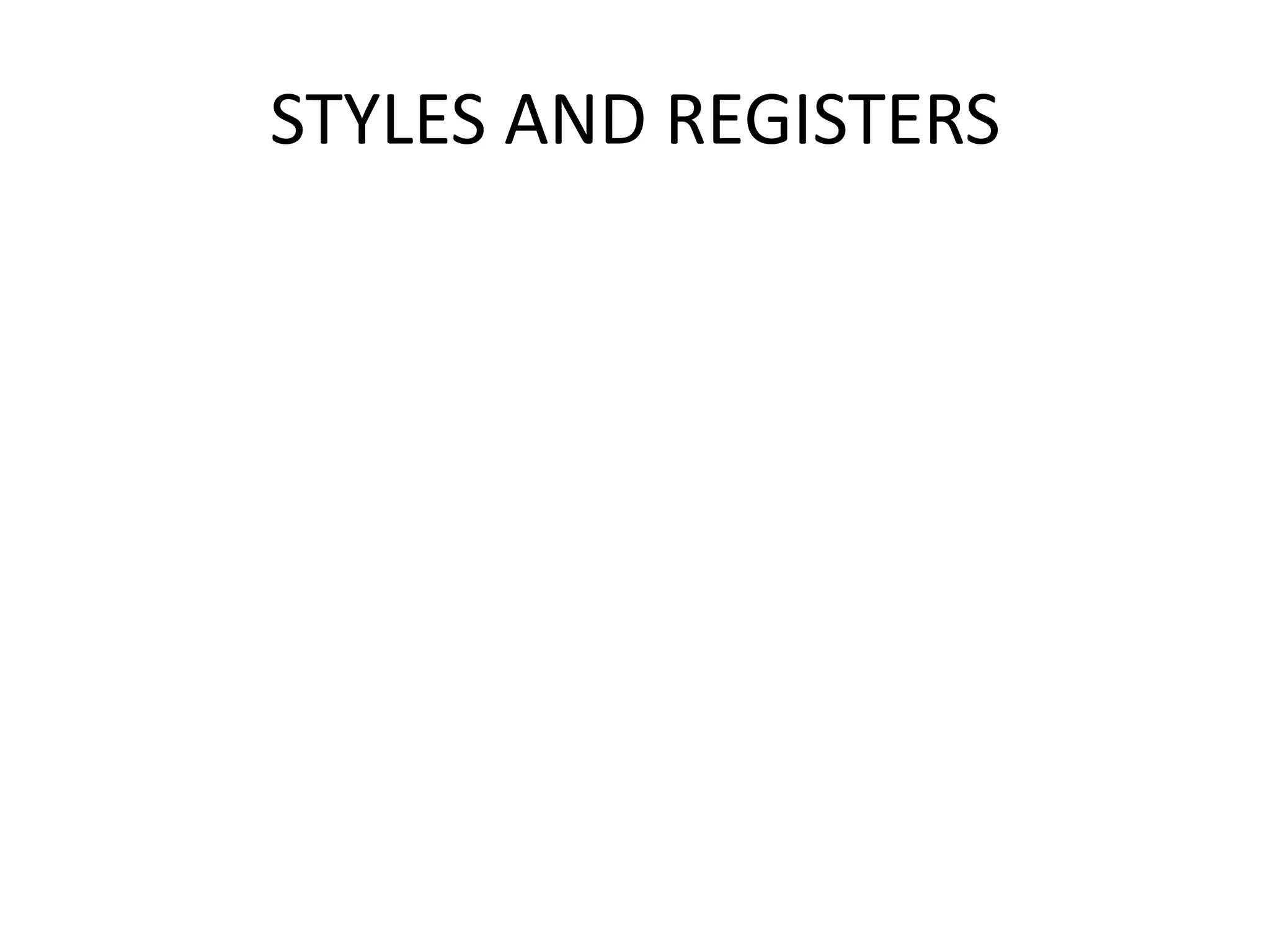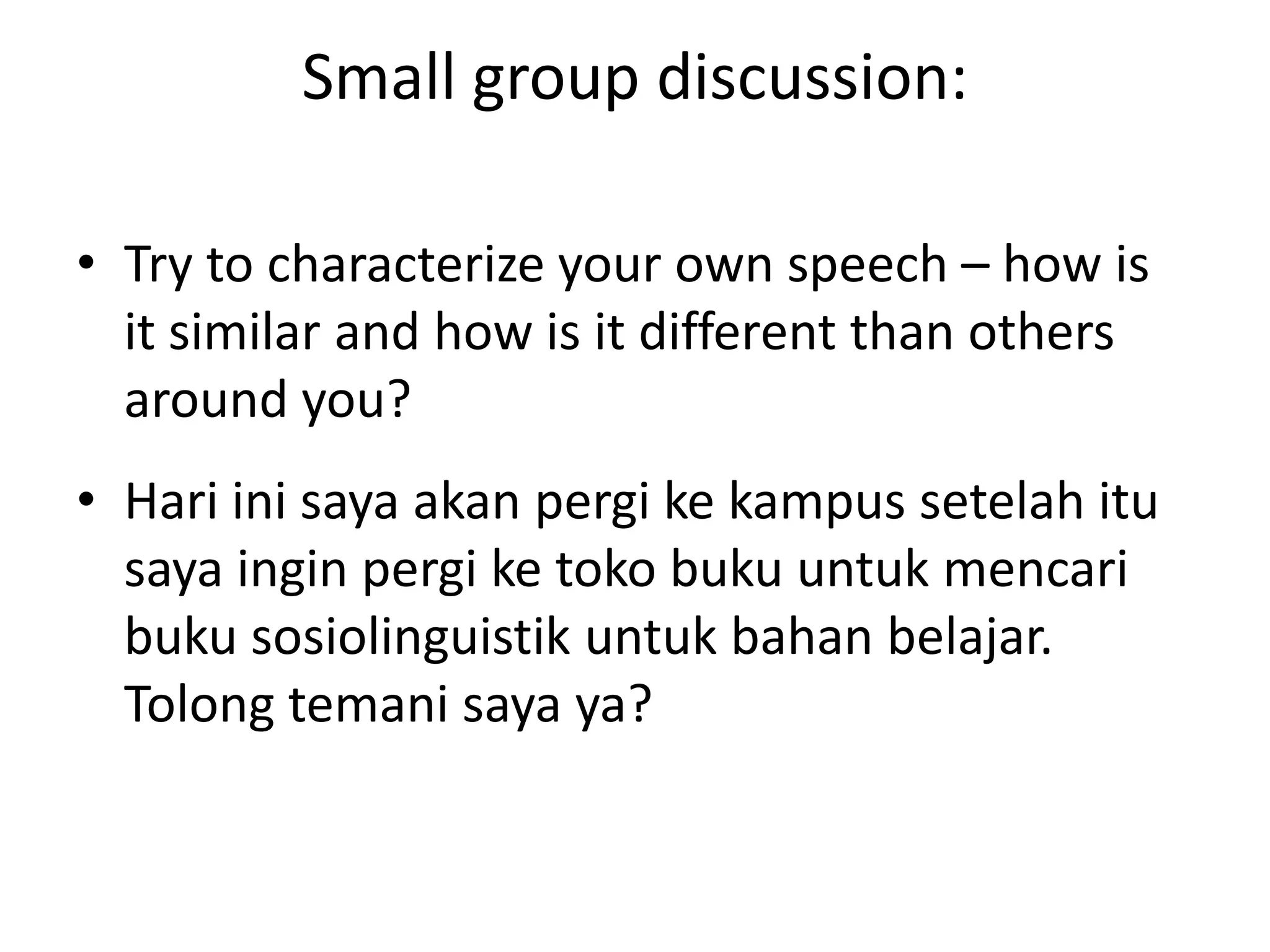This document discusses language variation and varieties. It defines key terms such as language, dialect, and varieties. Some main points:
- No two speakers speak exactly the same way and an individual's speech varies across situations.
- Language varieties refer to different forms of language influenced by social factors like region, social class, individual, and situation.
- A dialect is a language variety spoken by a community that has distinguishing phonological, lexical, and grammatical features.
- Varieties refer to sets of linguistic items associated with external social factors like a geographical area and social group.
- Dialects are influenced by various social factors and everyone speaks at least one dialect. Standard dialects have more prestige than others due
